Statistics show that only 9% of all sites can be easily found on the web, while 91% of all web pages don’t receive organic traffic from search engines.
How do you make users aware of your company and promote a website to the masses? The website that showcases your company is an essential sales tool to generate sales and gain users’ credibility.
Try out these nine super actionable website marketing strategies and tips to boost your traffic and sales right away!
What Is Website Marketing?
First, let’s make it clear. Website marketing is the deliberate promotion of a website to attract qualified visitors who could be potentially interested in a company’s products or services. More traffic to a website implies more possibilities to present your valuable offer to potential consumers. That’s why website marketing is such an important topic to discuss.
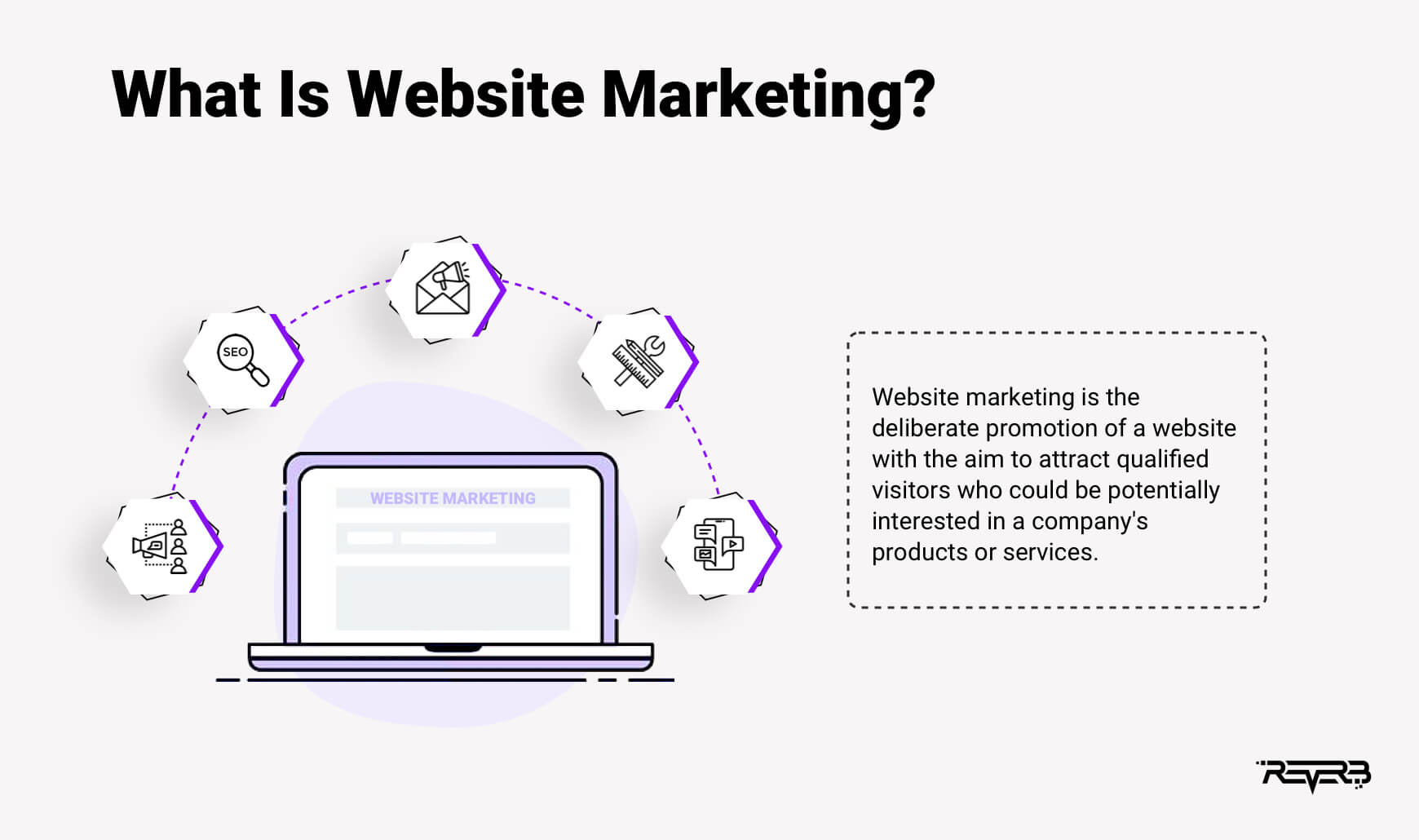
Top 9 Website Marketing Strategies To Apply ASAP
By applying various website marketing strategies and channels, including search engine optimization (SEO), content marketing, social media engagement, and other promotional activities, you make your site easily findable by target users on the web. Additionally, integrating localization services can enhance these strategies by ensuring your content marketing translation strategy is culturally and linguistically tailored, which is crucial for engaging international markets and expanding your global reach.
A well-managed website marketing strategy may help your company get new customers and, as a result, increase its market share.
But how do you create and apply website marketing strategies effectively? Consider the following approaches.
1. Site Audit and Optimization
Efficient website promotion is nearly impossible without conducting a preliminary analysis of the site’s gaps, flaws, and non-compliance with commonly accepted standards. Basic site audit directions include SEO audit and UI/UX design audit. Mobile optimization plays a crucial role in this process.
SEO Site Audit
SEO audit is a complex assessment of all of the site’s parameters that can affect its performance, indexing by search robots, and page rankings.
During a site audit, you analyze all of your web pages to evaluate the site’s health score and define potential issues and concerns.
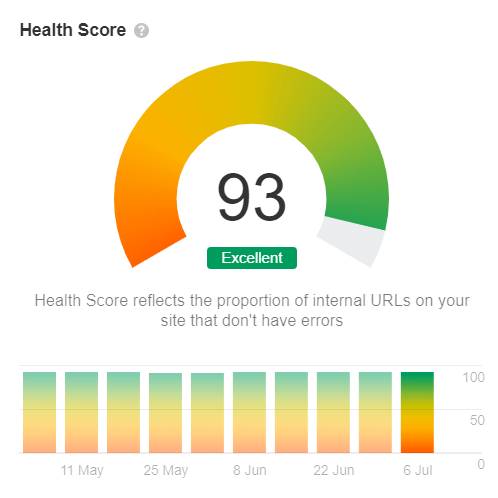
For this, you can use automated SEO tools such as Ahrefs, SEMRush, and others.
With Ahrefs, you can check the following parameters:
- Overall site’s performance
- HTML tags
- Social tags
- Sitemap
- Quality of the content
- Incoming links
- Localization
- External pages
- And many more
Later, based on all these factors, Ahrefs creates a comprehensive report using all of the detected site errors and provides recommendations on how to address them.
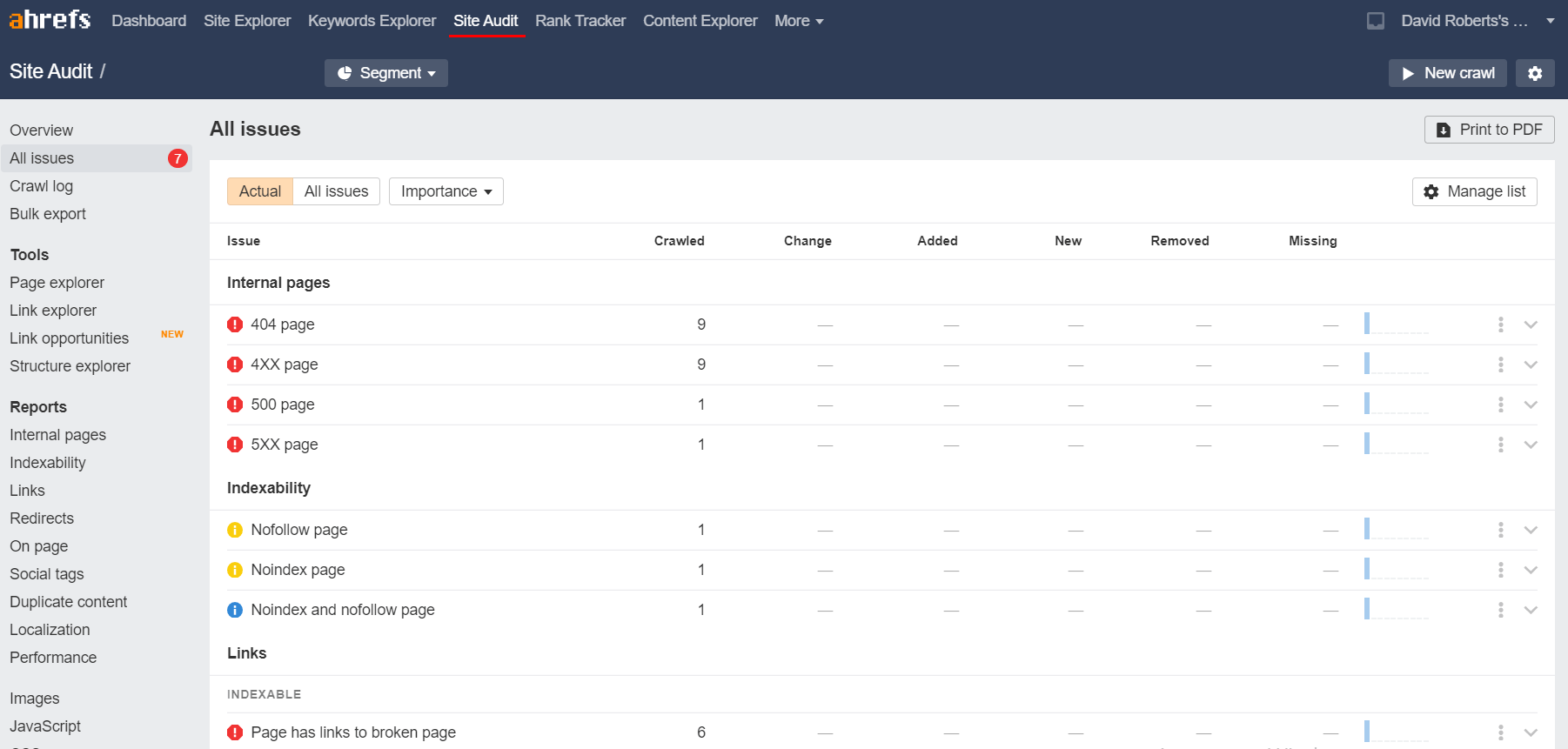
UI and UX Design Audits
By performing UI (user interface) and UX (user experience) design audits, you can assess how convenient and appealing your site is for users.
It’s time to revise the UX and UI of your site if:
- Users come to your site but do not take any target actions
- Users abandon their carts during their buying process
- Users spend little time on the site
- The interface is overloaded: there are useless elements and sections, along with incomprehensible functionality
The foundation of the UX/UI audit is the analysis of the site’s behavioral metrics. They include scroll depth, session duration, and bounce rate, in-page clicks, conversion or abandonment, hotspots on the site, and other actions.
For a complete understanding of the behavioral metrics, analyze the analytics. You will be able to detect trends rather than just looking at individual data items. The most commonly used behavior analytics tools include Hotjar, CrazyEgg, and Kissmetrics.
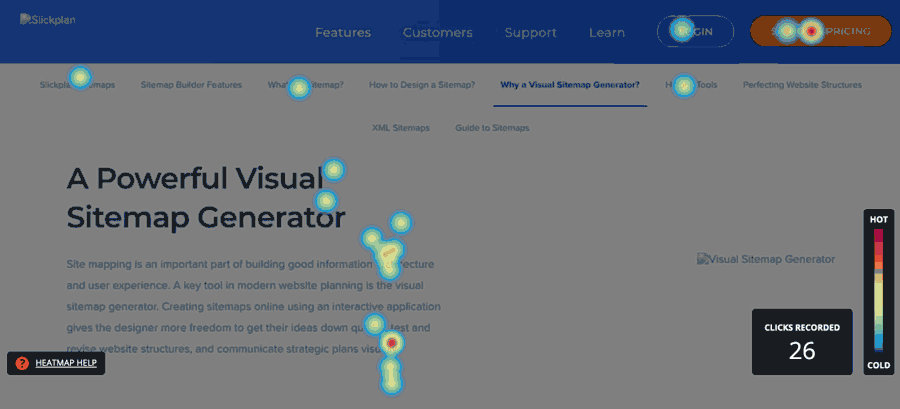
After understanding and organizing the findings, you may pass them to the design team or branding consultants. They will decide how to improve brand visibility and website consistency to increase conversions and build a positive users’ attitude.
Mobile Optimization
Statistics prove that nearly 73% of Internet users will use just their smartphones to surf for information in the near future, which suggests that people prefer surfing the Internet on their smartphones rather than from the desktop. Due to this reason, today, search robots are actively checking sites for adaptability for mobile devices. If the site is inconvenient to use from a mobile or tablet, it will be difficult for you to reach the top of search results. That’s why you should pay special attention to the mobile optimization of your website.
To check whether your website is well-optimized to mobile, use a free tool from Google – Mobile-Friendly Test. Improve the weak points according to the comprehensive report with detailed recommendations.
Basic mobile optimization procedures include:
- Testing your website on different devices and eliminating flaws
- Choosing a reliable web host
- Accelerating load time
- Creating a responsive design
- Developing a consistent user experience
2. Search Engine Optimization (SEO)
Now, when your website has great performance and lacks technical flaws and issues, it’s time for some SEO magic to make it easy for users to find it online. Since over 80% of people come to the Internet first to search for some goods or services, SEO is the primary channel for generating qualified traffic.
SEO isn’t about keyword stuffing. An efficient search engine optimization includes a thorough analysis and works on the design, text, links, and technical aspects (discussed above) of your web pages.
The important steps include:
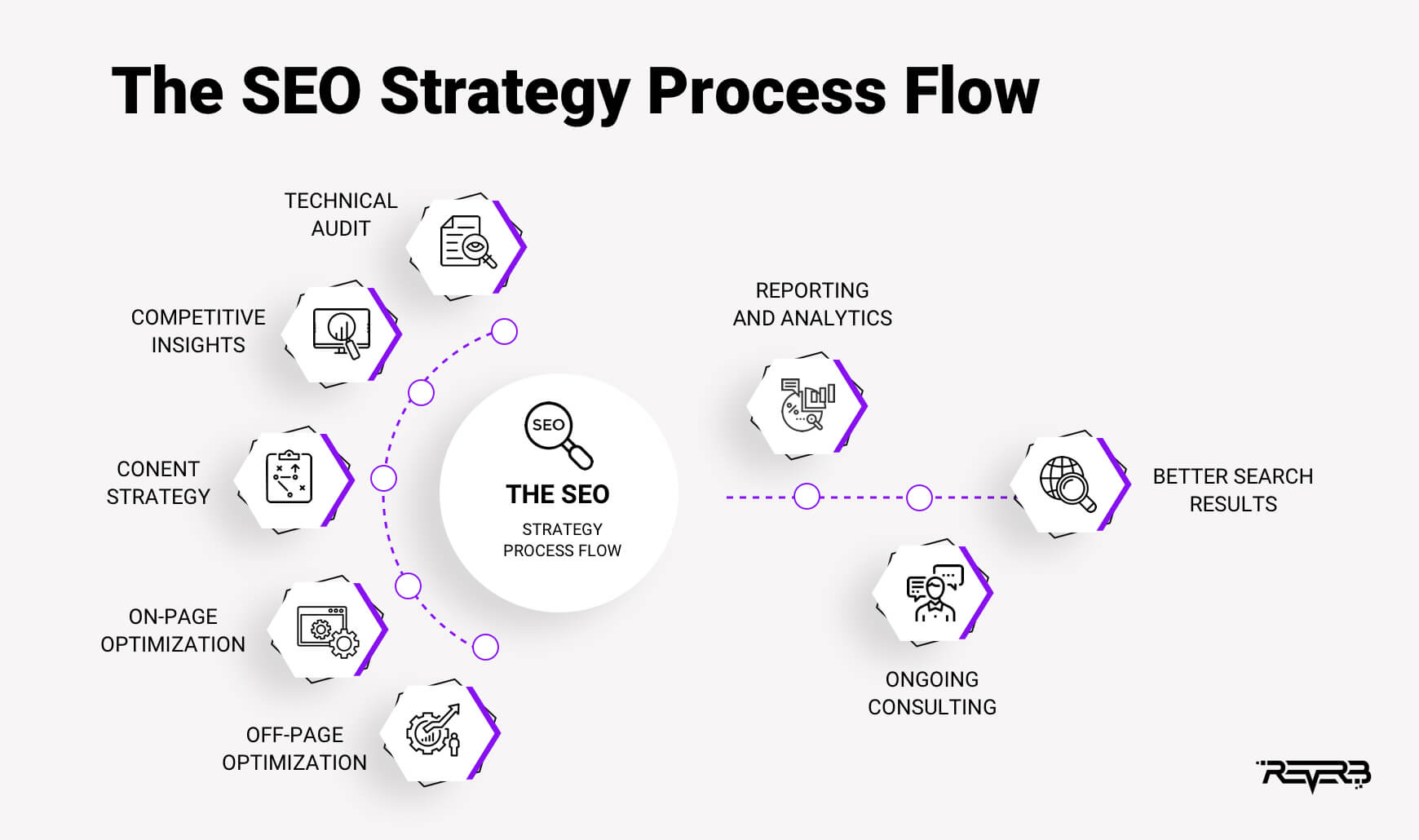
3. Link building
Let me add a few more words about link building, as it’s one of the most efficient tactics to promote your website. Simply put, link building means obtaining links to your site from other resources. It’s essential for increasing domain rating and consequently improving your site’s ranking. When done carelessly (for example, building links on low-quality unrelated sites or buying links), this strategy can bring you more harm than profit.
Publishing guest and sponsored posts on reputable niche-related resources with do-follow backlinks to your site are the easiest and safest link-building tactics.
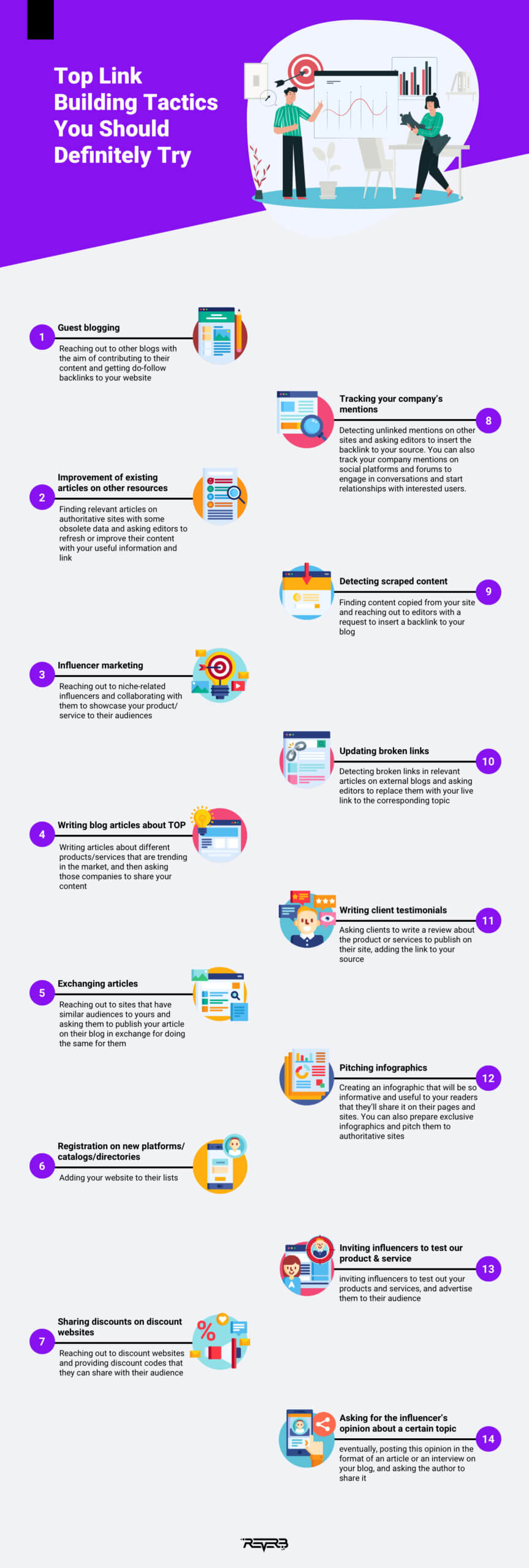
4. Email Marketing
Email marketing isn’t dead. This channel delivers one of the greatest ROIs ($41 for every dollar spent). Here’s how you can succeed with email marketing today.
When talking about email marketing, the first thing that comes to mind is cold business emails. In the hands of a savvy marketer, cold or bulk email marketing provides a significant boost to a company’s revenue. But how do you write a good business email that gets high open rates and positive replies?
To begin with, you have to grab users’ attention from the first words to ensure they don’t miss your email in a thread of identical messages. For this, pay special attention to the subject line and be straightforward.
For example, in our cold email headline, we take recipients right to the point by specifying our agency’s core competence – content marketing.

Second, when your email is segmented and personalized, it receives a 46% higher response rate than a standard letter. Go beyond simple personalization and try advanced personalization tricks such as suggesting relevant products in accordance with a user’s liking or sharing tips that can solve their problems.
When done correctly, cold email marketing gives you a competitive advantage, providing good email deliverability and high open and response rates. Make sure your emails land in the recipients’ inboxes successfully by conducting an email audit.
Your email closing is more important than you think, and therefore, it is essential to close the email with the right words and strategy. Any email sent from your brand’s domain name should have a link to your website. As a result, users interested in learning more about your offering will be able to navigate to your website without any additional research effortlessly. Use the right words in the sign-off and experiment with creative design solutions.
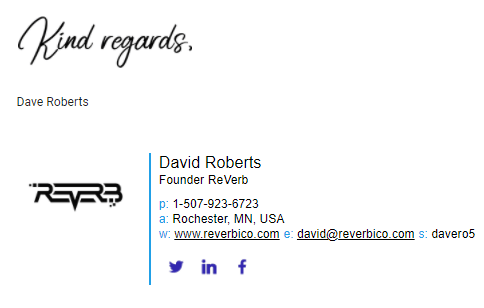
5. Crowd marketing
With the rising popularity of community interactions today, crowd marketing appears to be one of the most efficient directions. The main advantage you get is the opportunity to spread your brand message to a large group of target users at once.
Communication with the audience takes place through:
- Social networks (groups and communities on Facebook and LinkedIn)
- Forums (Quora, Reddit, etc)
- Blogs (commenting on the posts)
- Networking at live events
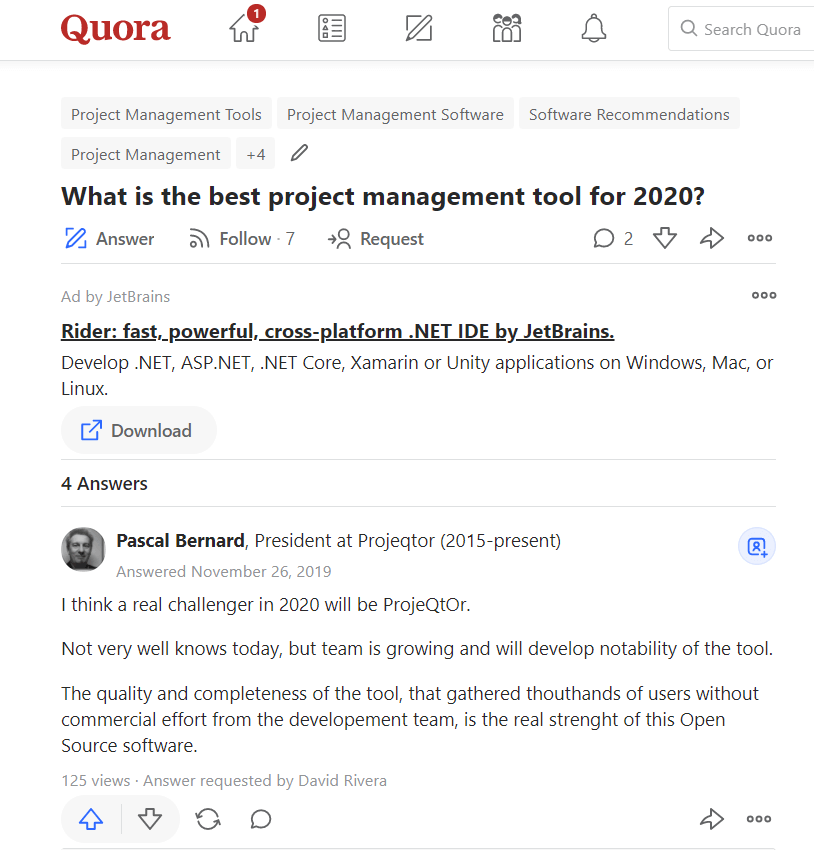
6. Affiliate Marketing
Affiliate marketing is aimed at website promotion through sharing a company offer on partner sites. In simple words, selected partners advertise your product or services on their resources, redirecting the interested people to your site. In turn, they get a certain percentage from every purchase.
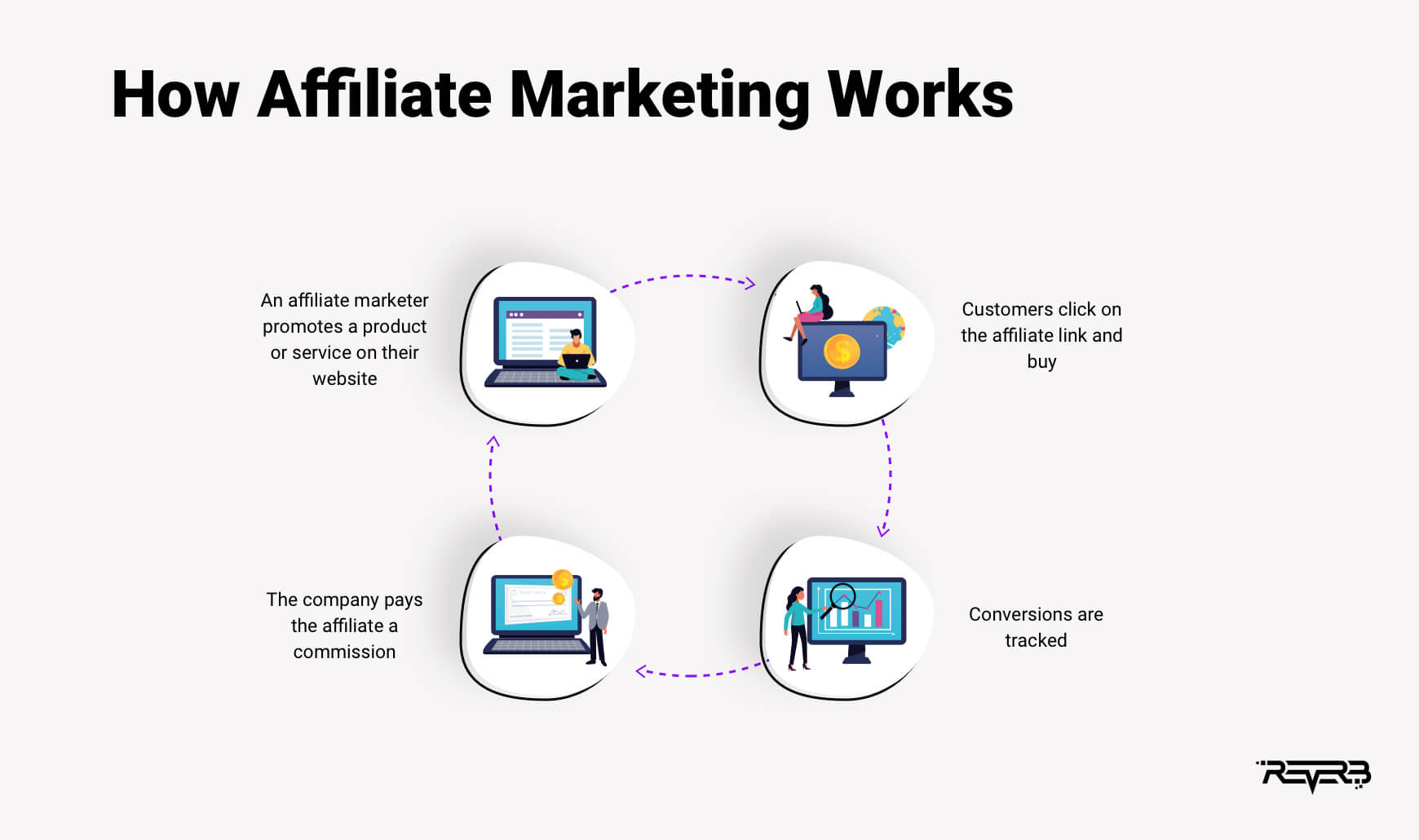
Well, how can affiliate marketing help you if you are thinking about how to promote your website? Easy! Just find partners with whom you could create an affiliate program. We’ve already prepared a step-by-step guide to successful affiliate marketing for you.
7. Paid advertising
If the previous website marketing tips don’t seem like your cup of tea or you want to get immediate results, consider paid advertising also known as SEM (search engine marketing). This channel allows you to reach the top positions in search results without a long wait (as in the case with SEO), attracting the target audience and leading them right to the buying stage.
There’s no better way to start with SEM strategy than by signing on Google Ads or any other ad platform. That’s how you can capitalize on the astronomical amount of searches that happen every day on search engines, and quickly grab the lion’s share of traffic.
Based on targeting options and placements, paid ads can be categorized into:
Contextual advertising includes a variety of ad types (text, image, video) that are shown to users in response to their search queries, interests, or behavior on the Internet.
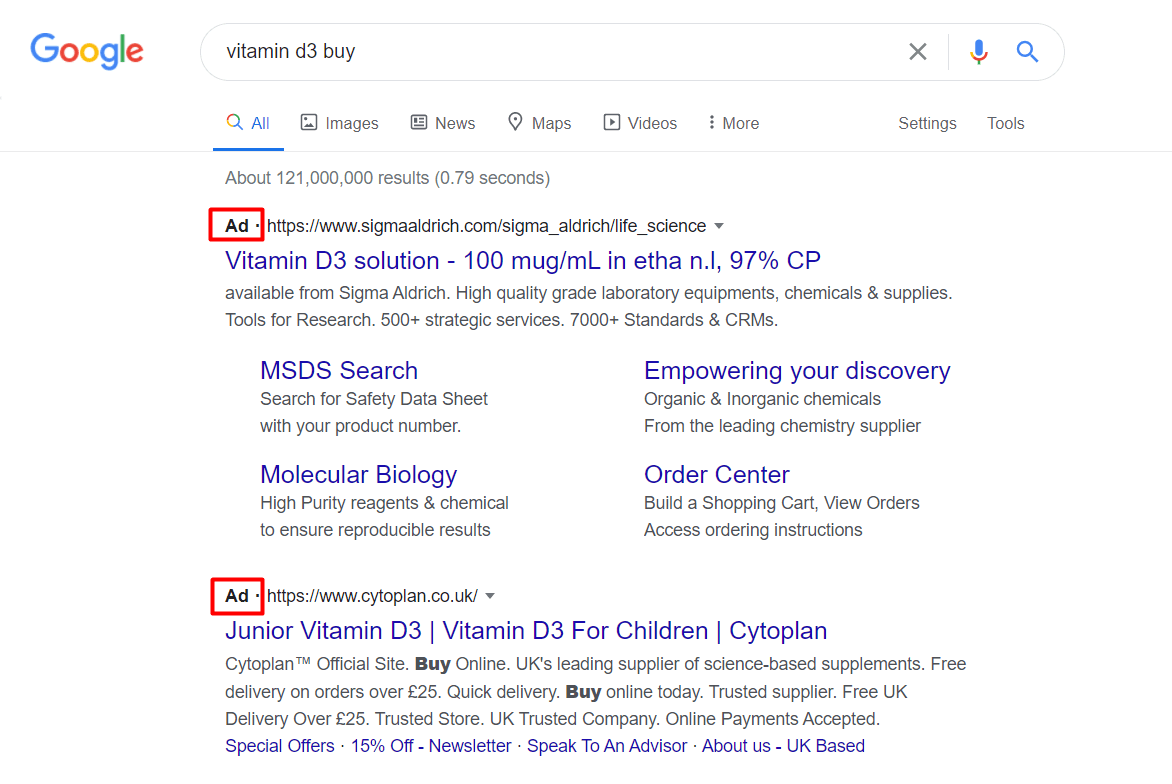
The purpose of targeting ads is to reach the audience with certain traits, interests, and actions. For example, a user works in the IT sector, and on this basis, he’ll see advertisements for useful professional tools and services.

In comparison to contextual advertising, display ads are shown to users outside search engines. For instance, on reputable websites, social media platforms, and other digital media channels. Often they are presented in a format of the text, images, or videos, which entice users to visit a landing page and perform a certain action. They can also be used for campaign retargeting. That is when adverts are displayed to users who visited your website earlier.
8. PR as a marketing strategy
Public Relations’ aim is to establish a strong brand for a business and maintain positive communications between the organization and its target audience. When it comes to PR tactics for website promotion, the process is mostly related to publishing press releases, being active on social media, and collaborating with influencers.
To draw attention to the company, its goods, and services, you can use also such PR solutions as:
- Advertising in magazines and newspapers
- Writing and distributing press releases
- Advertising on television and radio
- Giving interviews

9. Social media marketing
With millions of people spending their free time on social media, social media marketing is the most powerful way to promote your website, increase brand awareness, build a loyal follower base, get new customers and increase the company’s sales nowadays. The larger your social media audience is, the easier it will be for you to generate qualified inbound traffic.
However, don’t rush into social media at full speed. Keep in mind that the various platforms attract various audiences. For example, LinkedIn works great for B2B businesses while Instagram is a must-have channel for online stores. Jump on this introduction guide to feel the difference.
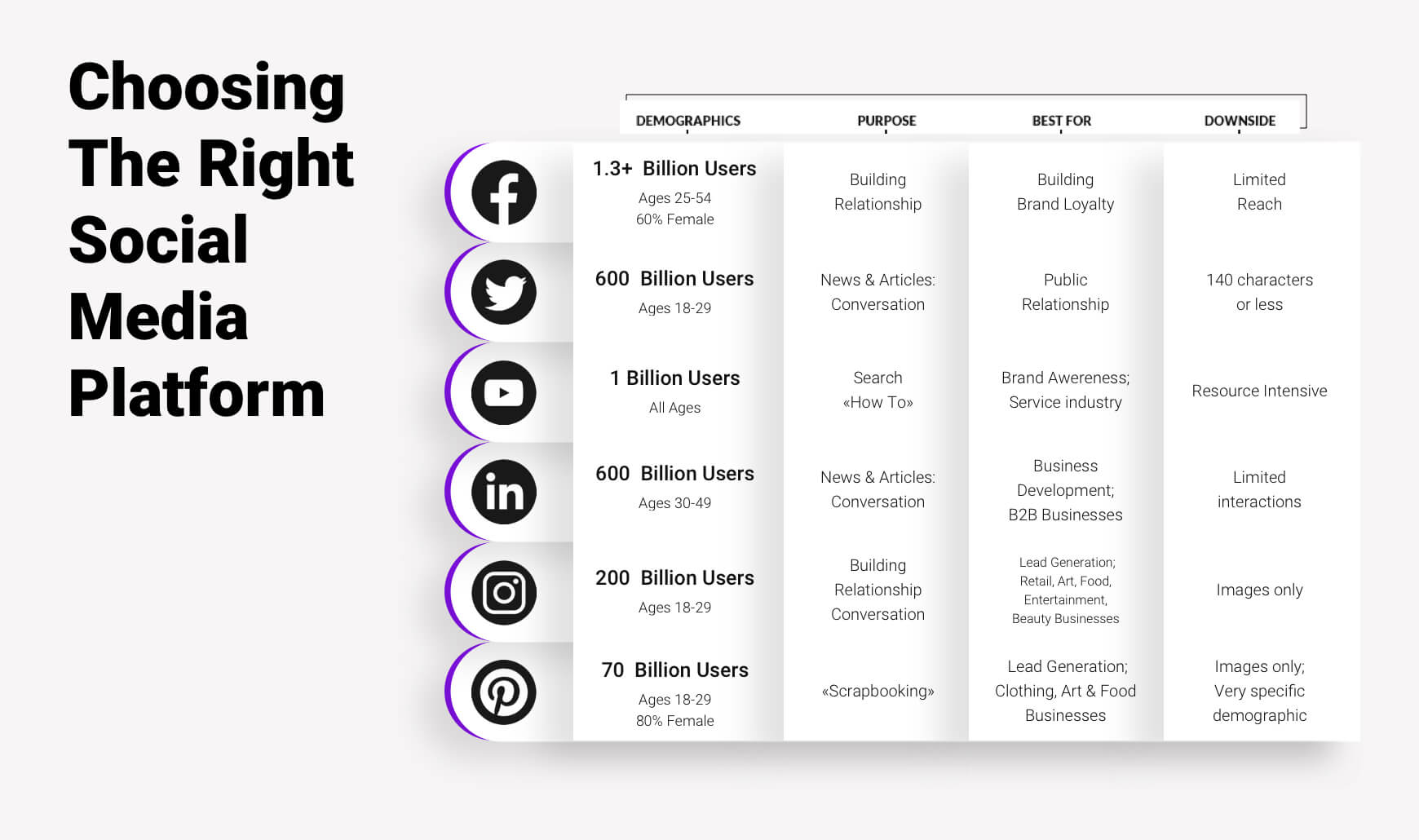
Conclusion
There is no doubt that your website is the main traffic-making and in most cases, money-making machine. By using the listed website marketing strategies, you are going to get the fuel that you need.
Want to know how to apply these channels in the most profitable way? Get assistance from the professional ReVerb team! We’ll start with a thorough audit of your site and generate an actionable website promotion strategy you’ll benefit from for more than a year.

















